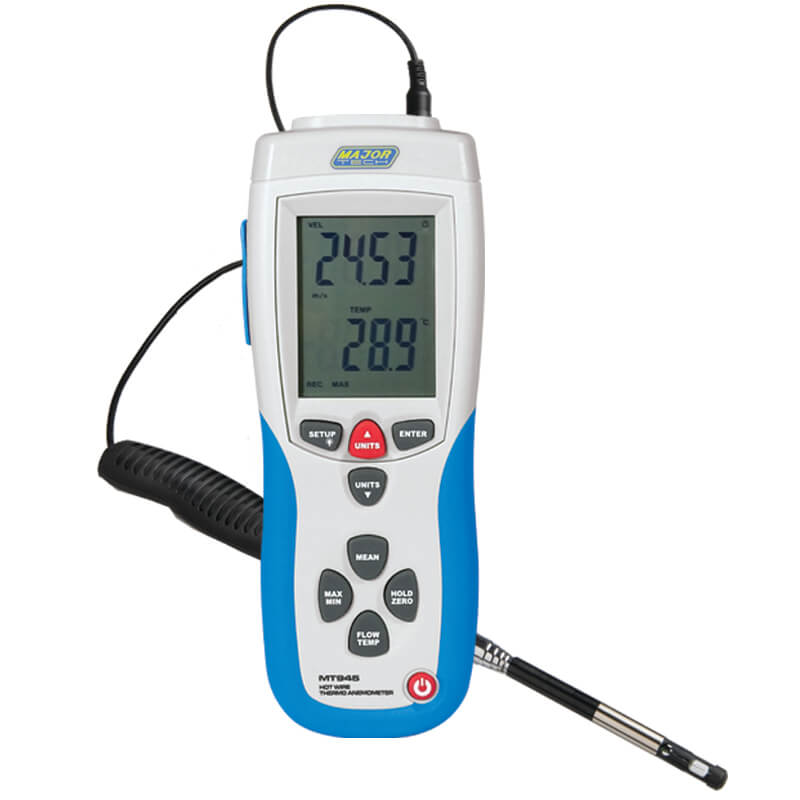All You Required to Know About Anemometers: Just How They Function, Why They Issue, and Where to Make use of Them
Anemometers, though usually neglected in the realm of clinical tools, play a vital function in different areas, offering useful insights right into wind speed and air movement patterns. As we delve into the ins and outs of anemometer innovation, we will certainly reveal the inner functions of these tools, their value, and the key considerations when choosing the ideal anemometer for details applications.

Anemometer Basics
A necessary tool utilized to measure wind rate and instructions, the anemometer plays a vital function in meteorology and different industries. An anemometer normally contains three or 4 cups that turn in the wind, a vane that points right into the wind, and sensors to track the movements or rotations. By computing the rotations or movements over a details amount of time, the anemometer can establish wind rate. The vane assists determine wind direction by directing into the wind, providing beneficial data for weather forecasting, aeronautics, maritime operations, environmental tracking, and wind power applications.
There are numerous types of anemometers readily available, including cup anemometers, vane anemometers, hot-wire anemometers, and sonic anemometers, each with its special functions and applications. Cup anemometers are frequently made use of for standard wind speed dimensions, while vane anemometers are favored for directional dimensions.
Concepts of Anemometer Procedure
Structure on the fundamental understanding of anemometer fundamentals, the principles of anemometer procedure illuminate the auto mechanics behind wind speed and instructions dimensions. Cup anemometers, for instance, have 3 or more mugs that capture the wind, triggering them to spin faster as the wind speed boosts. Hot-wire anemometers rely on a warmed cable that cools down as wind passes over it, with the price of cooling determining the wind rate.
Importance of Anemometers
Anemometers play an important role in determining wind rate and direction, offering crucial data for weather forecasting, environment studies, environmental monitoring, and aviation operations. Meteorologists count on anemometers to collect exact wind information, aiding them recognize weather condition patterns, forecast tornados, and problem timely cautions to the public. Wind ranch drivers make use of anemometers to evaluate wind conditions and maximize electricity manufacturing from wind turbines.
Applications Throughout Numerous Industries
Applications of anemometers cover across diverse markets, showcasing their flexibility and utility past weather forecasting. In the renewable power industry, anemometers play a vital role in evaluating wind conditions for wind ranch positionings, guaranteeing optimal energy production. Industries like building and construction and mining utilize anemometers to check wind speeds, vital for safety and security protocols, specifically read the full info here when working at heights or in open-pit mines where solid winds can position threats. Anemometers are also important in the air travel market, helping pilots in understanding airspeed and wind instructions for risk-free take-offs and touchdowns. The maritime field gain from anemometers for ship navigation, aiding seafarers prepare for climate changes and adjust courses appropriately. In farming, anemometers aid farmers in managing plant splashing by offering real-time data on wind rate to prevent drift. Additionally, anemometers locate applications in heating and cooling systems to enhance air flow and boost energy effectiveness in buildings. The diverse usage instances of anemometers underscore their significance across numerous industries, highlighting their vital duty in enhancing functional safety and security and performance (anemometer).

Selecting the Right Anemometer for Your Demands
For general objectives, a cup anemometer is suitable for gauging wind speed, while a vane anemometer gives wind instructions information. Hot-wire anemometers are excellent for low airspeed dimensions, and ultrasonic anemometers supply high precision and toughness.

Conclusion
In final thought, anemometers play an important duty in gauging wind rate and direction throughout numerous industries. It is vital to think about the significance of anemometers in order to make see this page educated choices when selecting the most ideal device for determining wind conditions.
There are numerous kinds of anemometers offered, consisting of mug anemometers, vane anemometers, hot-wire anemometers, and sonic anemometers, each with its unique features and applications. Mug anemometers are commonly used for standard wind speed measurements, while vane anemometers are liked for directional measurements. Hot-wire anemometers are appropriate for reduced airspeeds, and sonic anemometers are optimal for high-precision dimensions in research and industrial setups.Building on the foundational understanding of anemometer fundamentals, the principles of anemometer operation illuminate the mechanics behind wind speed and direction measurements. For general purposes, a cup anemometer is appropriate for determining wind speed, while a vane anemometer offers wind direction data.
Comments on “Anemometer Innovations: The Most Recent Modern Technology for Wind Rate Dimension”